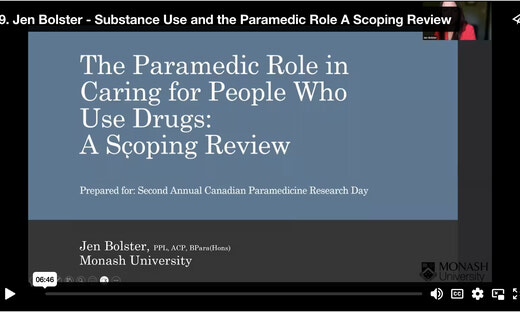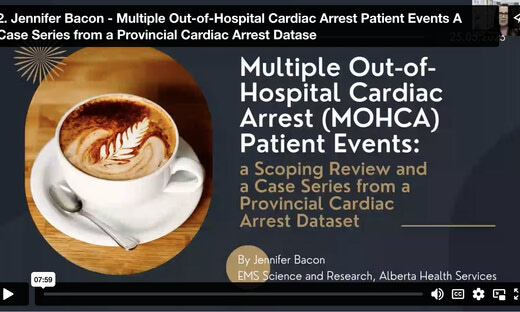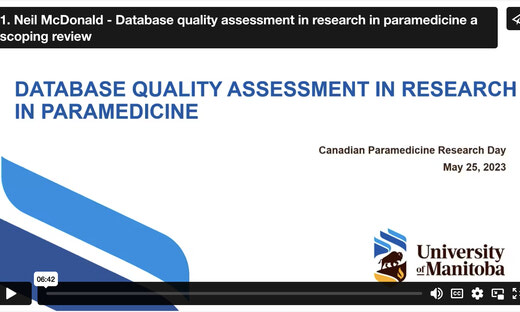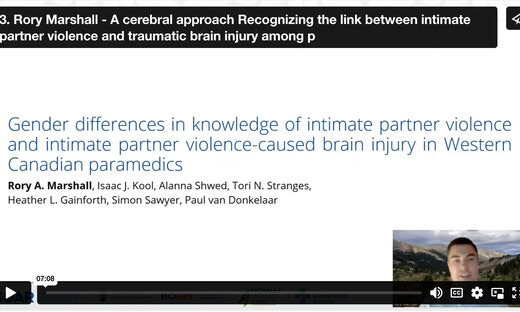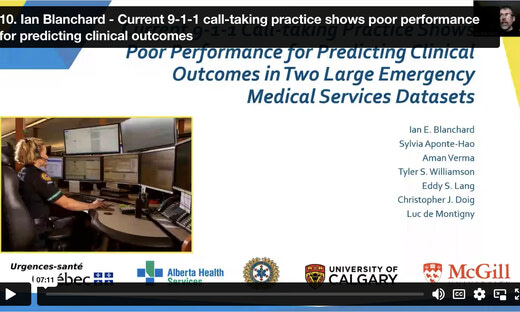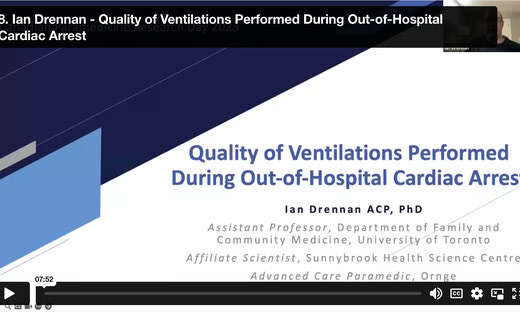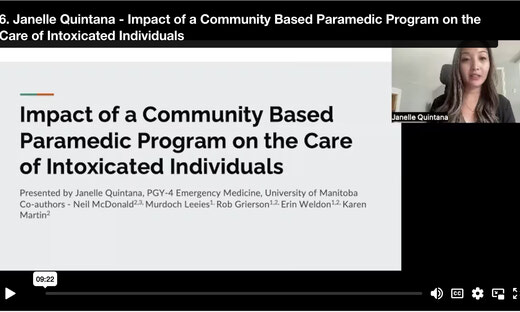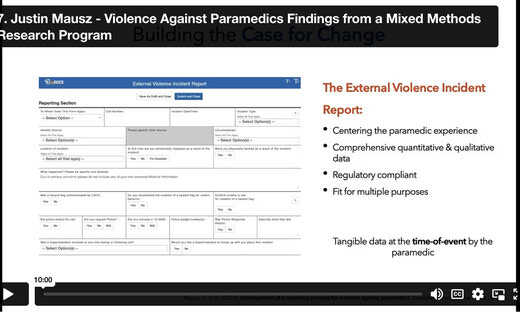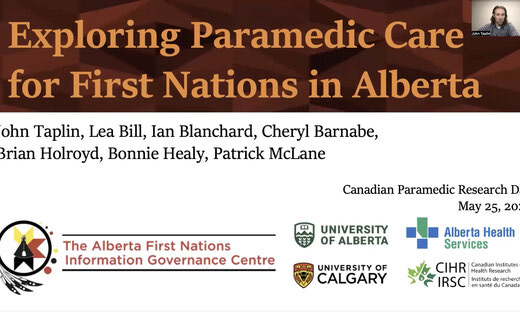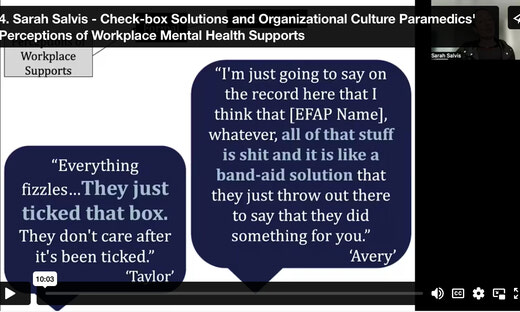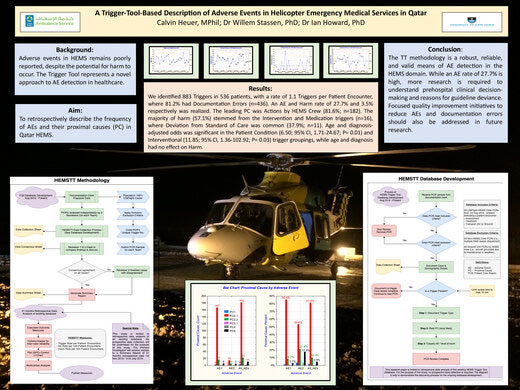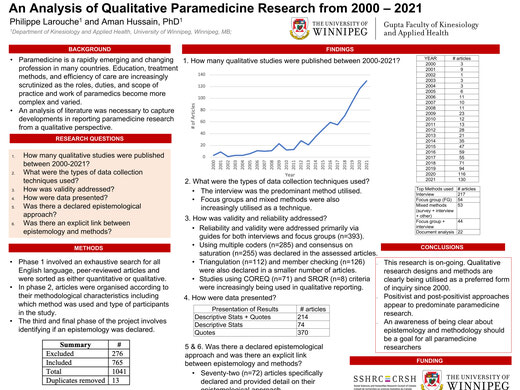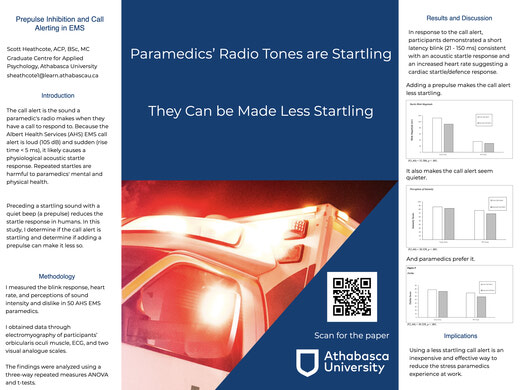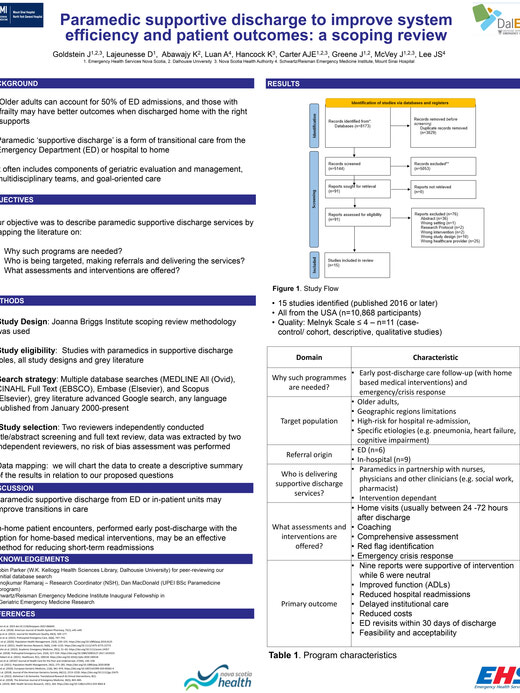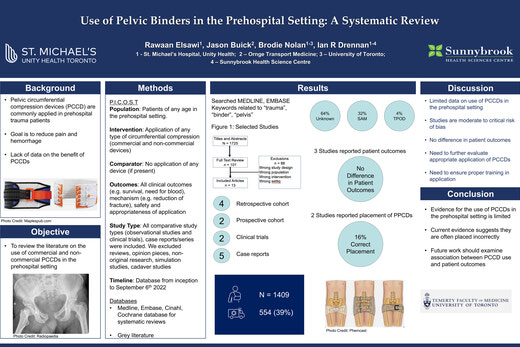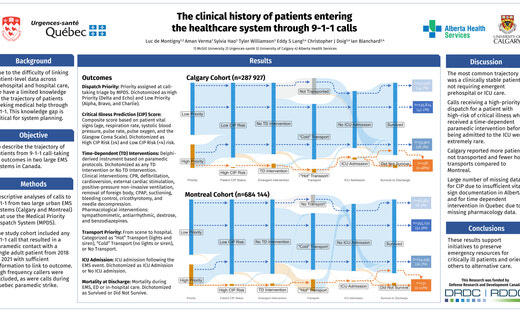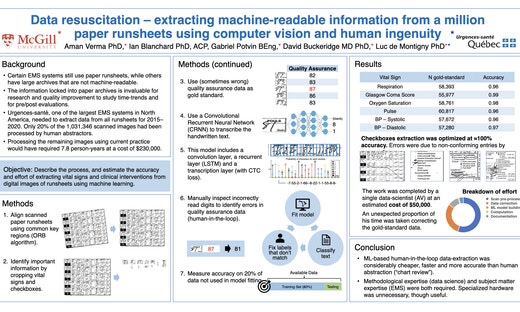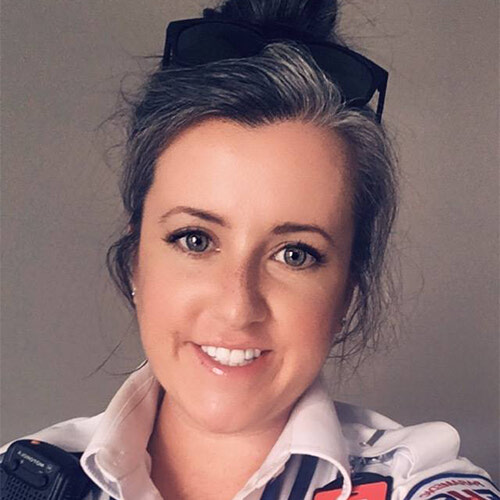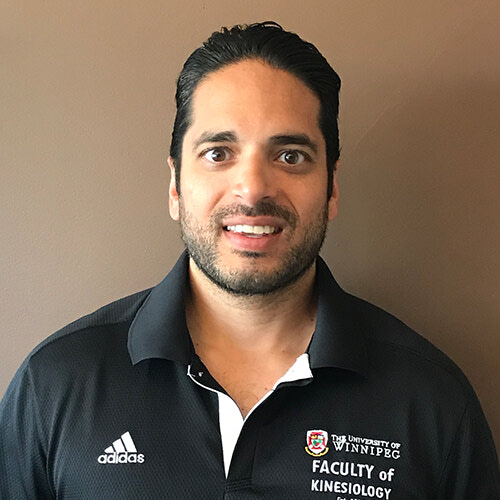Presented By: Jennifer Bolster
As the paramedic profession continues to grow and evolve, a shift from reactive to holistic patient care models is required. As the first and often the only point of medical contact for many patients from marginalized
Presented By: Jennifer Bacon
Objective - Describe MOHCA events from a provincial cardiac arrest dataset.
Presented By: Neil McDonald
Objective - To describe the range, extent, and nature of DQA practices within research in paramedicine.
Presented By: Rory A. Marshall
Objective - To examine gender influence on knowledge of IPV and IPV-BI in paramedics.
Presented By: Dr. Ian Blanchard
Objective: To evaluate the performance of current practice in Alberta (AB) and Quebec (QC) at predicting patient acuity based on a range of clinical outcomes.
Presented By: Dr. Ian Drennan
Objective: To determine the quality of ventilations performed by prehospital providers during cardiac arrest management.
Presented By: Dr. Janelle Quintana
Objective - To evaluate the impact a sobering centre with CP medical assessment in terms of volume (number assessed) and safety (later transported to hospital).
Presented By: Dr. Justin Mausz
Violence against paramedics has been described as a "serious public health problem", but one that remains "vastly underreported" - in part, owing to an organizational culture that encourages paramedics to
Presented By: John Taplin
Objective: The objective of this study was to understand First Nations community members' experiences with paramedic services, and paramedic experiences providing care to First Nations in Alberta.
Presented By: Sarah Salvis
Objective
Considering the potential challenges associated with assisting staff, our objective was to explore paramedics' perspectives of workplace mental health supports as a means to map out the success of those approach
Presented By: Calvin Heuer
The aim of this study was to retrospectively describe the frequency of AEs and their Proximal Causes (PCs) in Qatar HEMS.
Presented By: Dr. Aman Hussain
The purpose of this study was to provide a general overview of qualitative research design used in pre-hospital and paramedicine studies. Rather than attempting to classify articles based on their traditions
Presented By: Scott Heathcote
In emergency medical services (EMS), paramedics are most often informed of an emergency call by an audible radio alarm called the call alert. The call alert used by Alberta Health Services Emergency Medical Services
Presented By: Dr. Judah Goldstein
Complex discharges of older people are problematic. Paramedics could help by adding an option for in-home assessment/ intervention post discharge.
Presented By: Dr. Ian Drennan
Pelvic binders (PB), also known as pelvic circumferential compression devices, are used in the prehospital setting to immobilize suspected pelvic fractures to reduce significant hemorrhage.
Presented By: Dr. Luc de Montigny
Objective: To describe the trajectory of patients from 9-1-1 call-taking to outcomes.
Presented By: Dr. Aman Verma
Objective: Describe the process, and estimate the accuracy and effort of extracting vital signs and clinical interventions from digital images of runsheets using machine learning.
Presented By: Jennifer Greene
The Prehospital Evidence-based Practice (PEP) program is an online, freely accessible, continuously updated repository of appraised EMS research evidence.
Presented By: Thérésa Choisi
EMS prioritize patients based on information provided by 9-1-1 callers to emergency medical dispatchers (EMD). Call-taking effectiveness and efficiency can be adversely affected by a non-cooperative caller.
Presented by: Timothy Makrides, PhD Student, Monash University
Exploring new and disruptive systems of practice in paramedicine.
Presented By: Dr. Aman Hussain
Acute Coronary Syndrome (ACS) remains a substantial healthcare burden. Previous research has demonstrated that women fare worse than men across a range of hospital-based ACS processes and outcomes.
Presented By: Matthew Douma
The sudden and unexpected cardiac arrest of a family member can be a grief-filled and life-altering event. Every year many hundreds of thousands of families experience the cardiac arrest of a family member.
Presented By: Jennifer Greene
In recent years, there has been an increase in the use of 911 which has overwhelmed many Emergency Medical Services (EMS) and acute care systems.
Presented By: Jason Betson
The physiological impact of transitioning from full-time study to work in occupations that involve high-stress environments and shift work may plausibly impact sleep patterns and quality.


